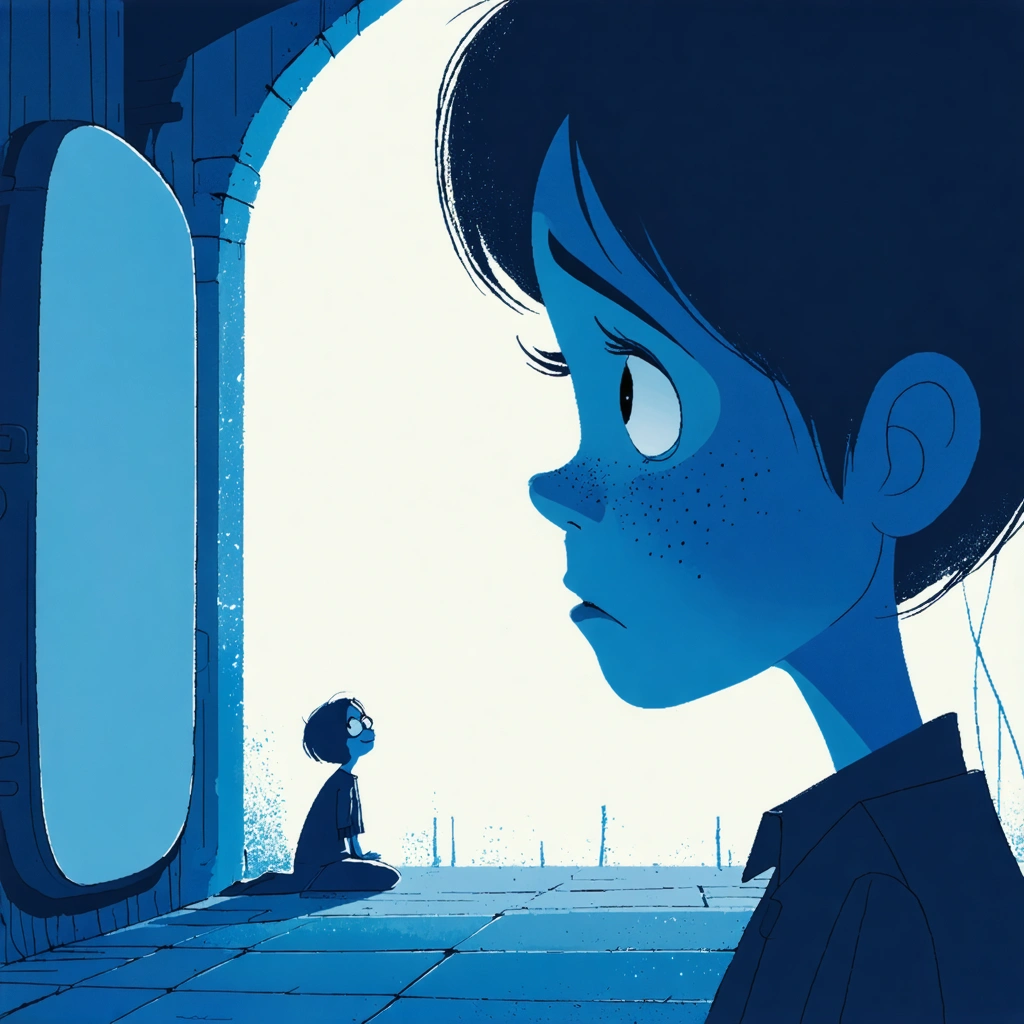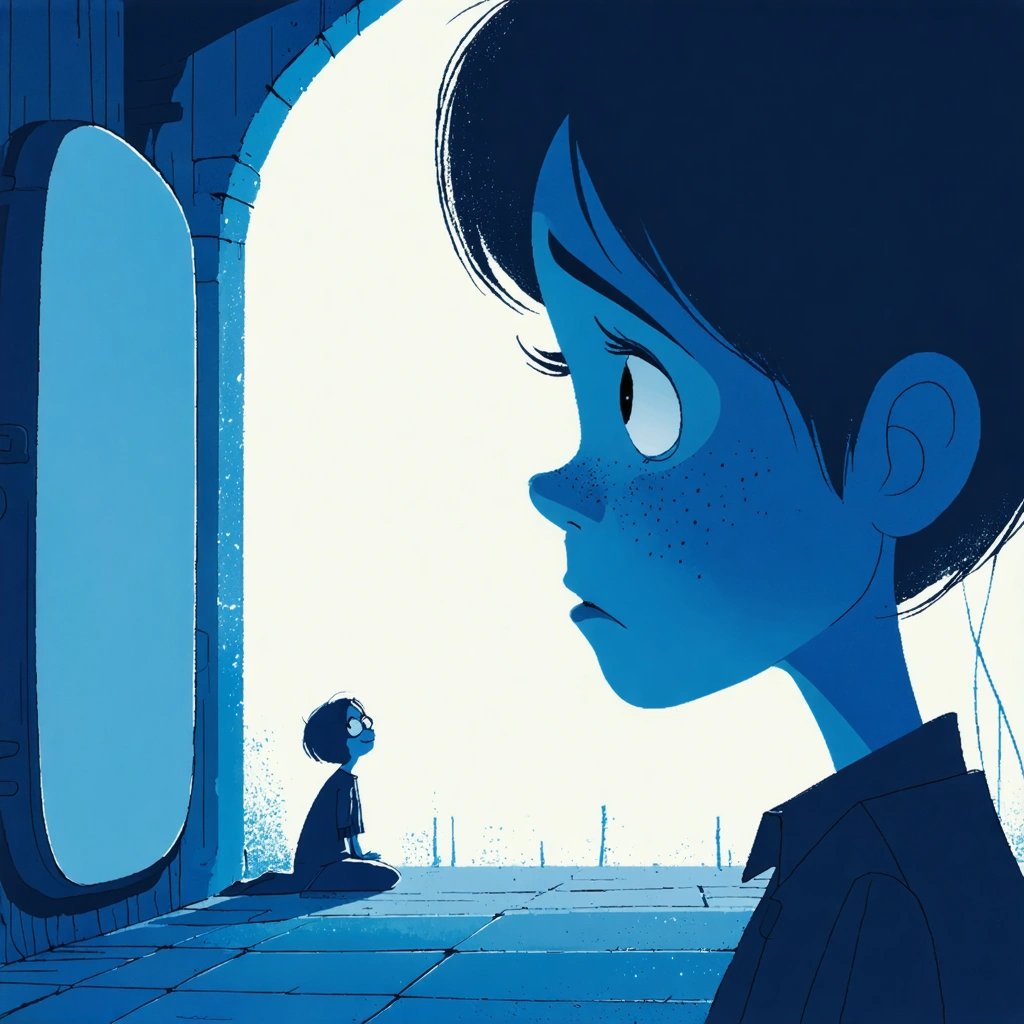
Imagine sitting in a darkened theater, the glow of the screen illuminating a world where emotions are more than just fleeting feelings—they’re characters living inside our minds, guiding our every thought and action. If you’ve ever seen the original Inside Out, you know how brilliantly it captured the complexity of emotions, especially the often misunderstood sadness, or as it’s so poignantly named in Spanish, tristeza. Now, with Inside Out 2, that emotional narrative dives even deeper, inviting us to re-examine what it means to feel and, more importantly, to embrace sadness as an essential part of our mental landscape.
Why Sadness Matters More Than Ever in Our Emotional Lives
In a world that constantly urges us to “stay positive,” sadness often gets the short end of the stick. We’re taught to suppress it, to push it aside, to “snap out of it.” But what if sadness isn’t just an obstacle to happiness? What if sadness, or tristeza inside out, is actually a vital emotional tool that helps us process loss, connect with others, and grow as individuals? The first Inside Out gave us a groundbreaking glimpse into this idea by personifying emotions, making it easier to understand why sadness plays a crucial role. However, the sequel promises to explore this even further, enriching the emotional storytelling with more nuanced portrayals of how sadness interacts with other feelings and shapes our inner world.
Think about it: how often do we truly acknowledge our sadness instead of brushing it off? How many times have you felt that pang of melancholy but ignored it, fearing it might spiral out of control? These are questions Inside Out 2 challenges us to confront, by highlighting the depth and complexity of emociones inside out—emotions that are rarely black and white but instead swirl in shades of gray, blending joy, fear, anger, and yes, sadness.
The Emotional Journey Continues: What to Expect from Tristeza in Inside Out 2
In this article, we’ll embark on a journey through the emotional landscape of Inside Out 2, focusing on the character of tristeza and her evolving role. We’ll explore how her presence enriches the storyline, providing a richer, more authentic depiction of human feelings that resonates with audiences of all ages, especially those who understand that life isn’t always about happiness.
We’ll also delve into:
- How tristeza inside out challenges conventional stereotypes about sadness
- The ways sadness interacts with other emotions in the film to create emotional complexity
- Why embracing sadness can actually lead to greater emotional resilience and empathy
- Examples from the film that illustrate these points through storytelling and character development
Whether you’re a parent wanting to help your child navigate their feelings, a mental health enthusiast interested in emotional intelligence, or simply a fan of the Inside Out universe eager to understand what makes the sequel so emotionally compelling, this article aims to shed light on the profound role sadness plays. After all, it’s not just about feeling blue—it’s about discovering why blue hues are indispensable in the colorful palette of our minds.
So, are you ready to dive into the heart of Inside Out 2 and uncover how sadness, or tristeza, transforms from a misunderstood emotion into a cornerstone of emotional storytelling? Let’s start unraveling the layers of emociones inside out and see how this beloved character enriches our understanding of what it truly means to feel.

Sadness in Inside Out 2: Exploring Tristeza’s Emotional Depth
What is the role of Tristeza in Inside Out 2’s emotional storytelling?
Tristeza, or Sadness, is a central character in the Inside Out franchise, and in Inside Out 2, her role deepens significantly to enrich the film’s emotional storytelling. Unlike traditional portrayals of sadness as purely negative, tristeza inside out is shown as a complex and necessary emotion that helps characters process difficult experiences and build resilience.
In Inside Out 2, sadness is not just a reaction to loss or disappointment but a vital emotion that prompts empathy, reflection, and healing. This nuanced portrayal aligns with modern psychological understandings of emotions, emphasizing that sadness—while uncomfortable—is essential for emotional balance and growth.
How does tristeza inside out contribute to the film’s emotional depth?
The contribution of tristeza inside out to the emotional depth is multifaceted:
- Facilitating Emotional Complexity: Sadness allows the characters, especially the protagonist, to experience a broader spectrum of feelings, which adds realism and relatability to their emotional journey.
- Encouraging Emotional Expression: By giving sadness a voice and personality, the film encourages viewers, especially children, to acknowledge and express their own feelings instead of suppressing them.
- Highlighting Emotional Interdependence: Inside Out 2 illustrates how sadness interacts with other emociones inside out, like Joy and Fear, showing that emotions work together to shape human behavior and decision-making.
By presenting sadness as a key player in the emotional landscape, the film challenges stigma around this emotion and fosters a healthier emotional dialogue among its audience.
Why is understanding tristeza important for viewers of Inside Out 2?
Understanding tristeza inside out is crucial because it helps viewers, especially young audiences, to:
- Develop Emotional Intelligence: Recognizing sadness as a valid emotion promotes better emotional literacy and empathy towards oneself and others.
- Enhance Mental Health Awareness: The film’s portrayal can reduce fear or shame associated with feeling sad, which is a step towards better mental wellness.
- Improve Coping Skills: By seeing sadness as productive rather than purely negative, viewers learn how to cope with challenging life events more effectively.
Psychological studies support these benefits; for example, research from the American Psychological Association highlights that emotional acceptance, including sadness, is linked with lower stress levels and improved psychological well-being.
How do emociones inside out interact to create a balanced emotional experience?
Inside Out 2 continues to explore the dynamic interplay between different emociones inside out—Joy, Sadness (Tristeza), Anger, Fear, and Disgust—to depict how emotions collectively guide behavior and personal growth. Sadness, in particular, often acts as a counterbalance to Joy, providing depth and context to happy moments and allowing for emotional authenticity.
This interaction is crucial for:
- Emotional Regulation: Balancing emotions prevents extreme reactions and promotes thoughtful responses.
- Memory Formation: Sadness influences how memories are encoded and recalled, often making emotional memories richer and more meaningful.
- Social Connection: Sadness fosters empathy and strengthens relationships by signaling vulnerability and the need for support.
What real-life lessons can audiences take from tristeza inside out in the movie?
Audiences can learn several important lessons from the portrayal of sadness in Inside Out 2:
- It’s okay to feel sad: Embracing sadness as a natural part of life helps individuals process emotions healthily.
- Sadness can lead to growth: Difficult emotions often precede personal growth and deeper understanding.
- Emotions are interconnected: No emotion works in isolation; understanding their interplay leads to emotional intelligence.
Parents and educators can use the film as a tool to discuss emotions with children, helping them develop a balanced emotional vocabulary and resilience.
Conclusion: Why Tristeza’s role is vital in Inside Out 2
Tristeza inside out goes beyond a simple emotional archetype; she embodies the complexity and necessity of sadness in human experience. Inside Out 2 uses her character to deepen the audience’s understanding of emotions inside out, breaking down stigmas and encouraging emotional acceptance. This approach not only enriches the storytelling but also provides valuable psychological insights that resonate with viewers of all ages.



